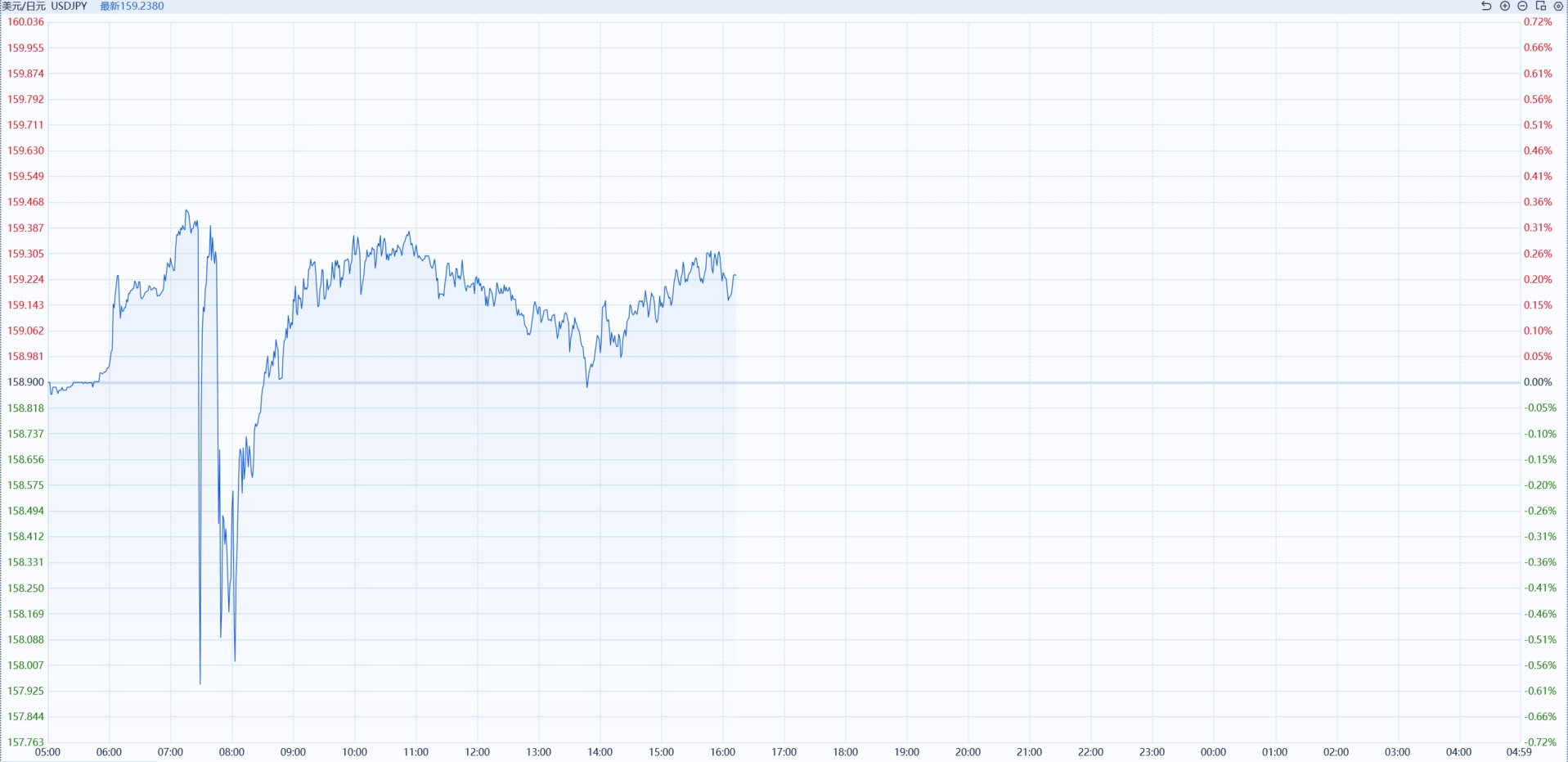Market behavior or Government intervention?Yen surges 3% after US CPI data cold
Analysts said the yen would not have moved so suddenly and sharply unless it was the Bank of Japan that intervened.
On July 12th, following the lukewarm reception of the US June CPI data, the US dollar surged against the yen, reaching a high of 157.44, marking the largest single-day increase since the end of 2022, with a rise close to 3%. The market suspects that behind the sudden surge in the US-Japan currency pair, there might be intervention from Japanese authorities.

Despite the clamor of rumors about the Bank of Japan raising interest rates, the yen's depreciation has never ceased. In the current wave of US dollar interest rate hikes, the yen is one of the currencies that has depreciated significantly against the US dollar. At the beginning of 2021, the exchange rate between the US dollar and the yen fluctuated between 100 and 110, but in July 2024, the US dollar against the yen once broke through the 160 mark, with an overall decline of about 50%.
Because of this, the sudden surge of the yen has aroused suspicion from various sides. Today, when reporters inquired to relevant departments, the Japanese Deputy Minister of Finance, Masato Kanda, refused to comment on the incident, but he told reporters: "The recent yen trend does not match the fundamentals."
Masato Kanda said: "From the perspective of whether it matches the fundamentals, I find the recent significant currency fluctuations very strange. If speculative-driven excessive fluctuations push up import prices and negatively affect people's lives, it would be very worrying."
He added: "In the floating exchange rate market, currency intervention is definitely rare, but we need to respond appropriately to excessive fluctuations or disorderly movements."
Compared with Masato Kanda's evasive response, the response from the Japanese Chief Cabinet Secretary, Yoshimasa Hayashi, was more direct. She said: "The Japanese government is prepared to take all possible measures on the issue of exchange rates." — This implies that the authorities may indeed intervene in the market to prevent the yen from falling too sharply. Japanese Finance Minister Shunichi Suzuki also said at a routine press conference that rapid and one-sided changes in the foreign exchange market are undesirable.
Market analysts pointed out that the sudden fluctuation of the yen may be related to the closing of option trading positions or intervention, but the specific reasons are still unclear. Investors' selling behavior of the yen has been going on for several months, accumulating a large number of short positions, partly because Japan's interest rates are far lower than other parts of the world. The weak position of the yen has prompted the Japanese authorities to issue multiple warnings, stating that they will take action when necessary.
However, some analysts say that unless it is the intervention of the Bank of Japan, the yen will not fluctuate sharply. Nomura Research Institute in Japan said: Looking at history, the Japanese government's intervention in the yen also began when it plummeted, but some intervention measures are not effective. The Japanese government was able to quickly lift the yen this time because the authorities acted quickly when the weak trend of the yen showed a turning point.
At the same time, according to multiple reports, the Bank of Japan also checked the exchange rate of the euro against the yen on Friday. Although Shunichi Suzuki refused to comment on whether the authorities conducted an exchange rate check, traders believe that the emergence of this information is itself a prelude to the Bank of Japan's intervention in the exchange rate.
Data show that the Japanese Ministry of Finance previously intervened twice on April 29 and May 1, buying 98 trillion yen to stop losses. Some foreign exchange brokers said that the trading volume within an hour after the inflation data was announced was comparable to the intervention on May 1, and the relevant traders requested anonymity. Analysis suggests that unlike the previous two interventions, the purpose of Tokyo's intervention this time is to accelerate the rebound of the yen against the US dollar.
·Original
Disclaimer: The views in this article are from the original Creator and do not represent the views or position of Hawk Insight. The content of the article is for reference, communication and learning only, and does not constitute investment advice. If it involves copyright issues, please contact us for deletion.